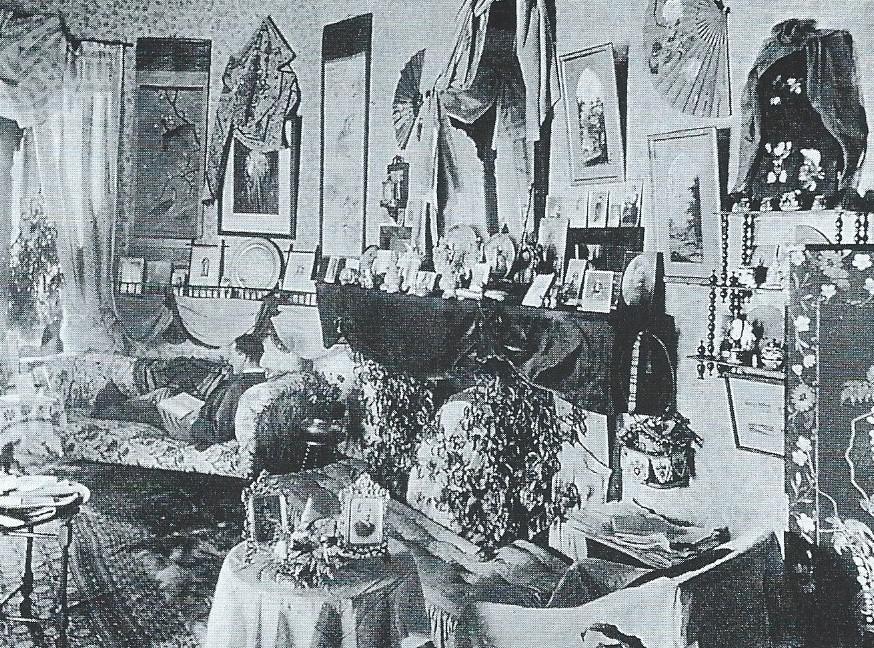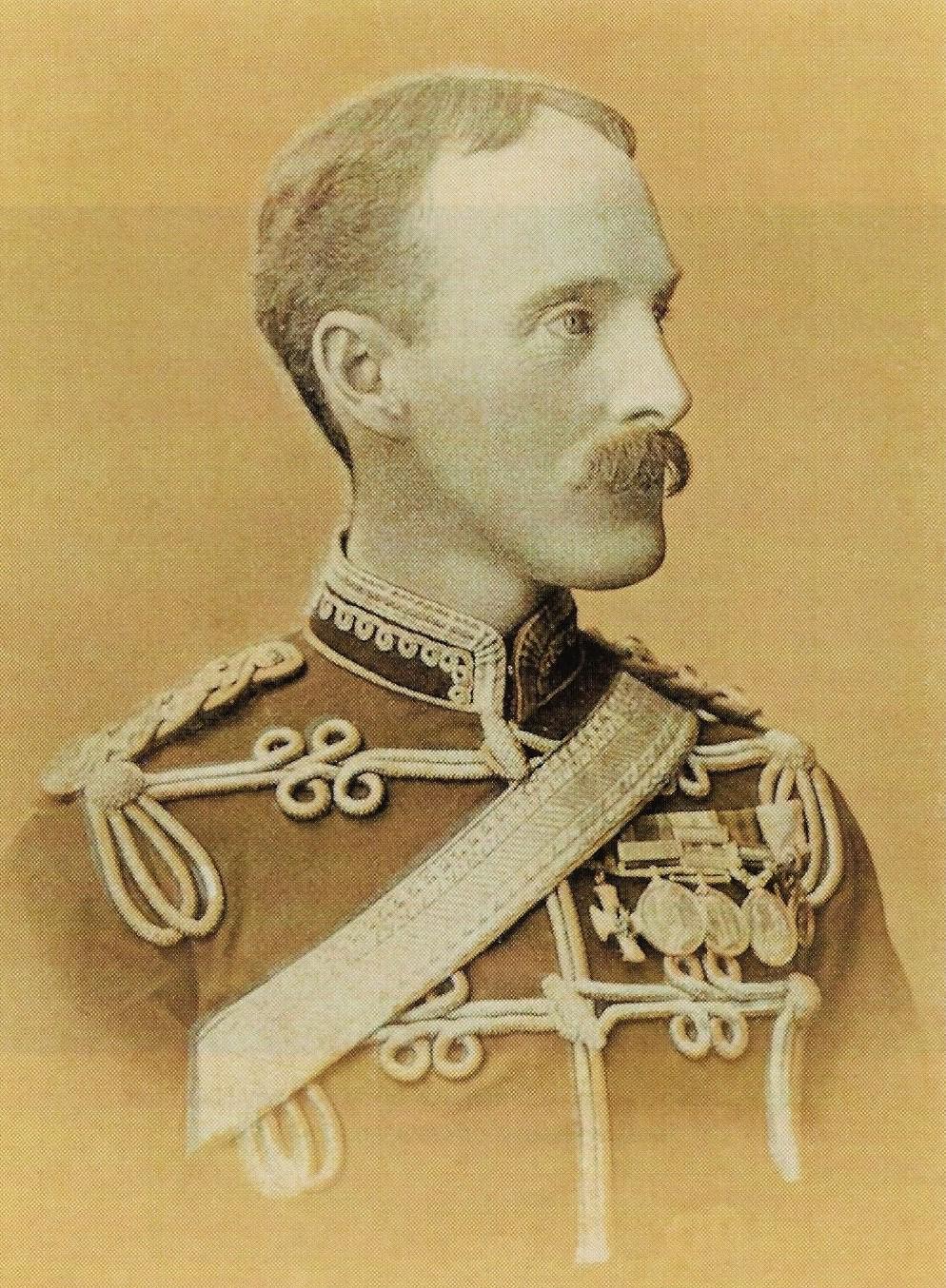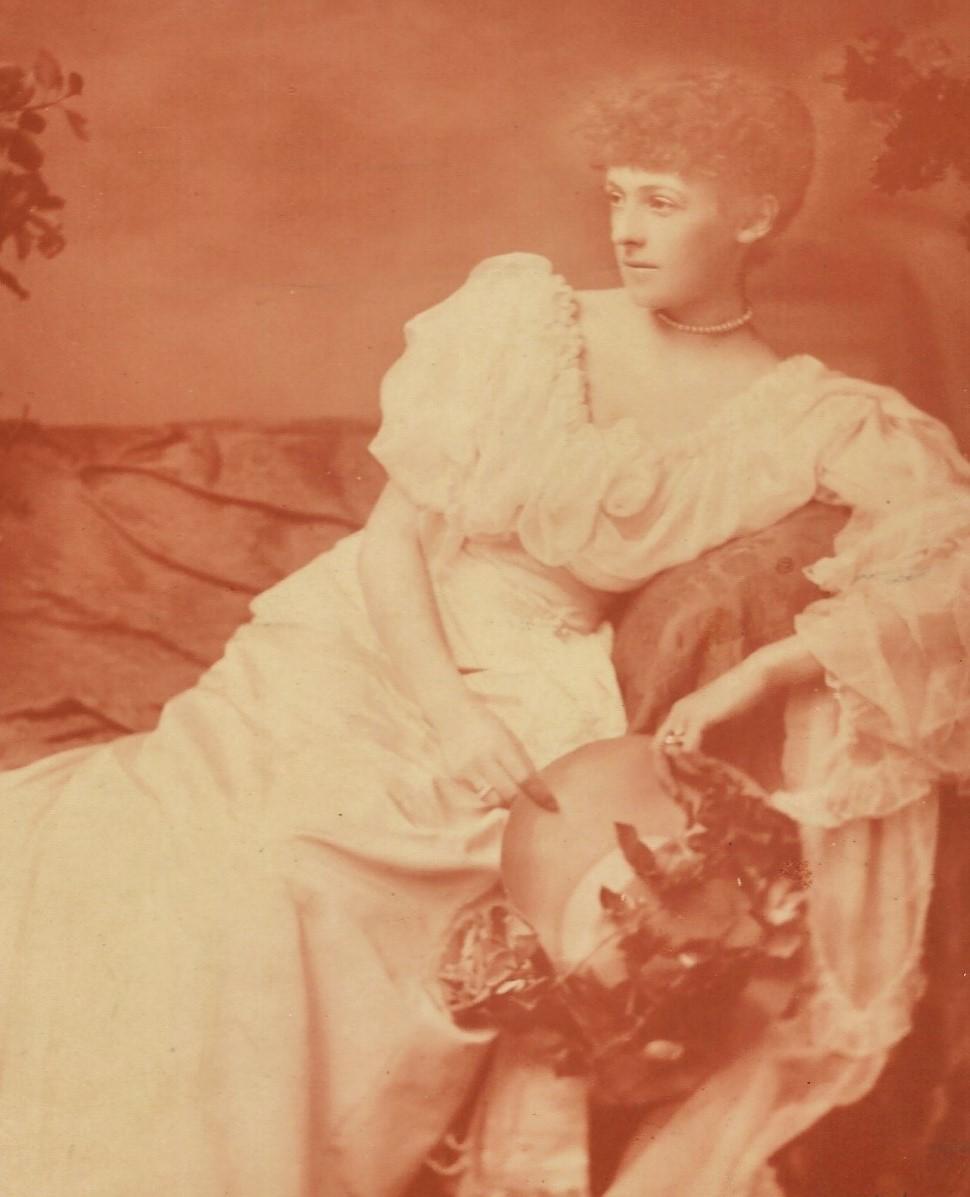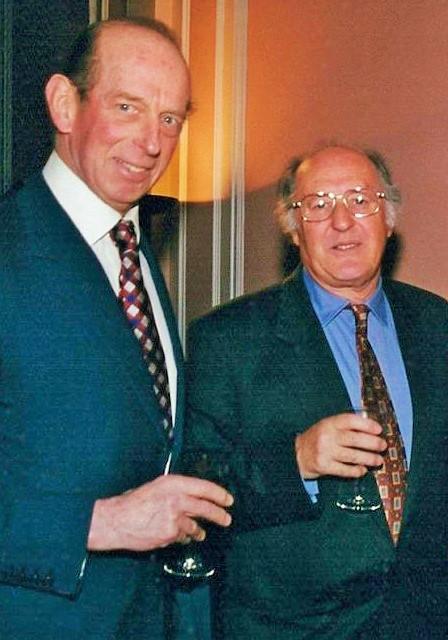Author Guest Post: Celia Lee – Part 1
THE FRIENDSHIP BETWEEN THE HAMILTONS AND THE CHURCHILLS
by Celia Lee author of:
JEAN, LADY HAMILTON (1861-1941)
DIARIES OF A SOLDIER’S WIFE
Part 1
General Sir Ian Hamilton wrote: “… nobody, not even Lord Bobs in all his glory, has touched my life at so many points as Winston Churchill.” Lord Bobs was the Hamiltons’ nick-name for Frederick, Lord Roberts, Commander-in-Chief of the British Army in India.


The little-known relationship between General Sir Ian Hamilton and his wife Jean, Lady Hamilton, with Winston and Clementine Churchill, comes to the fore in JEAN, LADY HAMILTON (1861-1941) DIARIES OF A SOLDIER’S WIFE, pub. Pen & Sword, that is written from the actual diaries by Celia Lee.

Miss Jean Muir, daughter of the Scottish millionaire, Sir John Muir, and Margaret nee Kay, whose father was a partner in the tea manufacturing business of James Finlay & Co., married the penniless but brilliant soldier, Major Ian Hamilton. The wedding was a high society affair in St. Paul’s Cathedral, Calcutta 1887, followed by a lavish wedding reception. Afterwards the young couple were whisked away on the viceregal motor-launch to Lord William Beresford’s villa in the lovely, romantic surroundings of Barrackpore, where they began their honeymoon. The early years of the Hamiltons’ married life was spent in India, where they lived in a bungalow at Simla. Much of Jean’s activities involved appearing like a mannequin, her tall, slim figure, immaculately dressed in the fashions of the day, attending dinners and balls, her head dazzling in a tiara, ropes of pearls around her neck, and missing no opportunity amongst the hierarchy of the British army to further her husband’s career.

Major Ian Hamilton and Winston Churchill had met on the North-West Frontier, India, 1897, when the British were going to war against the tribesmen. The friendship between the two men struck up then, would last for the rest of their lives. Twenty-one years spanned the difference in their ages, and there can be little doubt that young Winston, just 23 years old, looked up to the experienced 44-year-old soldier as a kind of father figure, his own father, Lord Randolph having died two years earlier. But for Jean’s diaries the closeness of the friendship would have remained relatively unknown.
When Hamilton was given command of a brigade in the Tirah province, on the north west frontier of India, Winston wired him, pleading for his help in obtaining an interview with Sir William Lockhart. Hamilton made the arrangements and Sir William was persuaded to take Winston on as an extra aide-de-camp. Sir William then took up his own duties as Commander-in-Chief India. Winston remained in the Bara Valley, going out with parties that were guarding the hill-tops and learning much about active soldiering. He returned home on leave in August and, with the help of Sir Evelyn Wood, who had served as a lieutenant during the Indian Mutiny (1857), got onto Kitchener’s Khartoum campaign. Before leaving, he appealed to Hamilton in a letter, asking him again to help further his career:
‘I am anxious to get something at home after Egypt as I do not want to leave the army until I am fixed in politics. But what? The only thing I can think of is the I.B. [Intelligence Branch.] I have no qualifications. But perhaps you would know whether this was in any way possible. It would interest me, and I believe I might be of use, as my pen is mightier than my sword … . Au revoir, my dear general – may we meet again when rifles are loaded and swords sharpened – if possible before an audience which will include 40 centuries.’ [Quoted: Hamilton, General Sir Ian, Listening for the Drums, pub. Faber 1944, p.238.]
Winston is here making reference to the upcoming campaign in Egypt and the Sudan, and to Napoleon Bonaparte’s famous address to his troops at the battle of the Pyramids, when he told them that forty centuries of history looked down upon them.
Ian Hamilton went to England to take up the position of Commandant at the School of Musketry, Hythe, Kent. Winston sent with him his manuscript of his novel Savrola that Hamilton delivered into the hands of his mother, Jennie, Lady Randolph Churchill, who was to pursue publication on his behalf. From the ship, Hamilton wrote a fatherly letter to the younger man, warning him:
“… you will only be losing time and training if you continue to hang between two or three avenues which radiate from your feet and lead towards fame each in its own way.”
He urged Winston, in whom he clearly saw great promise, to decide between the army or politics and to put all his efforts behind one or the other.
Reminiscing years later, Jean Hamilton wrote in her diary of a visit by Winston’s mother, made to her at Hythe, circa 1898/99:
‘The day Lady Randolph and Lady Sassoon called there, … Nancy [Bateman] was staying with me, and we had one or two nice boys from the Musketry School with us who had been lunching, and we were sitting grouped half in the garden and half on the low window seat. I had on a picturesque hat I had invented. I suppose having nothing special to do on Sunday afternoon while their men played golf, they thought they’d like to come and see what I was like – Winston had written so much about Ian to his Mother.’
Jennie’s future, second husband, Lieutenant George Cornwallis-West was attending the school of musketry at that time which was undoubtedly an added attraction for her as thus far their affair had been kept secret.

Hamilton and Winston were to see action again, during the South African Boer War (1899-1902). Hamilton was in the thick of the fighting from the very start, winning fame at the battles of Elandslaagte and Ladysmith. Winston came out as a war correspondent, was captured by the Boers, and made a dramatic escape with a price on his head – wanted dead or alive – eventually making his way back to the army, where he served as an officer in the South African Light Horse, and was for a while attached to Hamilton’s command. When Winston went home to England, he was greeted as a war hero, ripe for political advancement to stand for a Conservative Party parliamentary seat.
By 1900, the Hamiltons had set up home at No.3 Chesterfield Street, in London’s prestigious Mayfair.

Jean was obliged to befriend Winston for her husband’s sake, and he would frequent their various homes. Winston published his Boer War dispatches, entitled Ian Hamilton’s March, adding greatly to Ian’s fame, and Jean invited him to dine with them. They got off to rather a bad start as she later told her family over dinner one day at her own family home, Deanston House, Doune, near Perthshire, recording in her diary the reply she had received:
‘ “… as Mr Churchill is so much engaged by his political work I write to say he is sorry”, … and signed by a secretary. I was furious at this impertinence, and had it framed and placed in my drawing-room.’ (27 April 1902, Deanston House, Doune.)
The letter hung on the wall for years! The reason for Jean’s fury was she knew Winston’s then girlfriend, Pamela Plowden (later Lady Lytton), who a few days later had quite unwittingly mentioned to her that Winston had taken her out to dine that same day. But the relationship between Jean and Winston improved due to their shared love of painting. Although it has been widely believed that Winston never sold a painting, Jean was able to record in her diary he made his first sale to her of one she had admired:
‘Winston … has been painting a lovely picture of the Barn, with brilliant sunshine and shade effects all day. … Winston brought his picture of ‘Ightam Moat’ … I paid him £50 for it.’ (16 October 1921, Lullenden Manor, East Grinstead).
Ian, in his Will, bequeathed it to Ightam Moat, that is a beautiful, idyllic, medieval, moated manor house in Kent. Ian also bequeathed to Winston a statue of a black buddha that he ‘acquired’ in Burma, 1886, and which had adorned the Hamilton’s staircase. It for a time, in turn, adorned the staircase at Chartwell House, until someone accidentally knocked it over and it smashed, surviving today only as a painting by Winston.
On a much earlier occasion Jean and Winston were at loggerheads over the death penalty, he, having been just made Home Secretary. She wrote in her diary that he told her over dinner, “I have had to sign a death warrant for the first time to-day, and it weighed on me.” When she enquired about the crime, he told her it was for “A man who took a little child up a side street and brutally cut her throat.” Jean’s sharp reply was, “That would not weigh on my mind.” (21 February 1910, 6 Seamore Place, London.)

Ian Hamilton was knighted for his heroic war service, January 2, 1901, and they became known as Sir Ian and Lady Hamilton. Jean found that becoming a titled lady elevated them to new heights in society and opened even more doors for her as well as for her husband.
Winston Churchill married, September 1908, Clementine Hozier, and soon brought her along and introduced her to Jean. What the Hamiltons and Churchills had in common was soldiering, battles and wars and, of course, politics. In all of this (excepting the actual battlefields) the women were almost as much involved as the men. No chance was passed up by the wives to further their husbands’ careers at dinners and house parties, in the presence of senior army officers. The women could argue as good as the gentlemen on the subject of politics.
With Winston’s advancement in politics the situation turned around. Having been newly promoted (1911) to First Lord of the Admiralty, Winston assisted Hamilton to be given the post of General Officer Commanding at Malta, where he and Jean lived in the splendid San Antonio Palace, Valletta. During that time Winston visited and witnessed Hamilton’s secret amphibious exercises that he carried out there. The experience would crucially influence Hamilton’s involvement in the future Dardanelles Campaign during the First World War.
Whilst home on leave in London, Hamilton went shopping at the royal jewellers for a present for Clementine Churchill, Jean wrote in her diary:
‘Yesterday evening he told me he had been to Asprey’s to buy a blue enamelled brooch and mirror for Clemmie Churchill – he never can be bothered choosing anything for a present or entering a shop, I don’t know what has come over him, it seems as though some other soul has come to inhabit his body for a time, such a rage for life and pleasure possesses him! (22 December, 1911).
The Hamiltons returned to live in London in 1914, setting up home at another mansion, No. 1 Hyde Park Gardens, overlooking Hyde Park, just prior to the outbreak of the First World War. As Jean received a handsome allowance from her father’s estate, she could put on lavish dinner parties and balls to which she invited Edwardian high society. The names that people her life who are recorded in her diaries as friends, intimates, and acquaintances, were many: the famous hostess, Ethel (Ettie) Lady Desborough; Winston’s first love Pamela Plowden; Alice Keppel (the famous great-grandmother of Camilla, Duchess of Cornwall), who was for many years mistress of King Edward VII; Lady Diana Manners, later Duff Cooper; the Asquiths, he being Prime Minister; Lady Randolph Churchill nee Jennie Jerome a great American beauty; Sir F.E. Smith the Attorney General; Sibyl, Lady Colefax; the colourful Maud, Lady Cunard; George, Lord Curzon, Viceroy of India, and his wife Mary, another American beauty; Frances Horner, patron of the Arts; the renown gardener Norah Lindsay; Consuelo, Duchess of Marlborough; Lady Sarah Wilson nee Spencer Churchill, and her sister Cornelia, Lady Wimborne, both being aunts to Winston.
There was, too, British army generals, including Ian Hamilton’s old commanding officer Frederick, Lord Roberts and his wife Aileen; Sir William Robertson, a future Chief of the Imperial General Staff; Hugh Arnold-Foster, Secretary of State for War; Lieutenant-General Sir William Birdwood; Major-General Walter Braithwaite; Sir John French; Earl Kitchener of Khartoum; Sir William Nicholson; Lieutenant-General Sir Henry Rawlinson; and Lord Alwyne Compton, to mention but a few that peopled their lives. There were, too, numerous Members of Parliament and the House of Lords, and the noted newspaper journalist Charles Repington, whose second wife Molly was a close friend of Jean.
Jean was shy of the British royalty as she did not like curtseying, but both they and foreign royalty and embassy dignitaries, peopled her life and her home. Queen Mary, the Duke and Duchess of Windsor, King George VI and Queen Elizabeth, feature in her diary.
There was as ever, at Jean’s homes, and those of her many friends that she visited, dinners, conversation, balls, music, and dancing, sometimes into the chandelier-glistening night and early hours of the morning, with breakfast being served before guests departed, all of which she recorded in her diary.
Jean was artistic and wrote poems, and she had a circle of prominent artist, literary, and musical friends, who peopled her dinner parties and took tea with her and accompanied her to the theatre. Articles about Jean and photographs of her and her glamorous home, featured in the fashionable magazines of the day, and she was painted by several artists, including a sitting to John Singer Sargent.

The Hamiltons were supporters of the Liberal Party, and Winston Churchill was throughout his life a liberal Tory that rendered him something of a maverick amongst the Conservative Party hierarchy and much of its membership. In 1904, he infuriated them by famously crossing the floor of the House of Commons to sit with the Liberals. It was through politics that Winston had met his future wife Clementine Hozier, who was a Liberal supporter, she, observing him in action in the House of Commons, from the Ladies Gallery, fell in love with him. Winston’s brother, John (Jack), younger by five years, had earlier, 1908, married Lady Gwendeline Bertie from Oxford, who was also a Liberal supporter, and close friend of the Asquith family, dining frequently at their house and engaging with them in card-playing. Jack followed Winston, who eventually returned to the Conservative Party fold, but Lady Gwendeline remained a staunch Liberal throughout her life. It meant the Churchills had a foot in both the Liberal and Tory camps. This was told to me in interview by Jack and Lady Gwendeline’s daughter, Clarissa Eden, Countess of Avon, (widow of the former Prime Minister Sir Anthony Eden), who will become a centenarian, June 28, 2020.
The Hamiltons’ marital relationship was competitive, and it is apparent from a conversation Jean had with Winston, when they were staying as guests for Christmas at the home of Lord and Lady Howe, (she being formerly Lady Georgina Spencer-Churchill), that Jean preferred it that way:
‘We discussed matrimony from his point of view, touched on love very slightly, and discussed “strife and life” at some length – I maintaining “that the one meant the other, and that when a thing was perfect it was finished and over”.’ (Christmas Day, 1903, Gopsall Hall, Warwickshire.)


